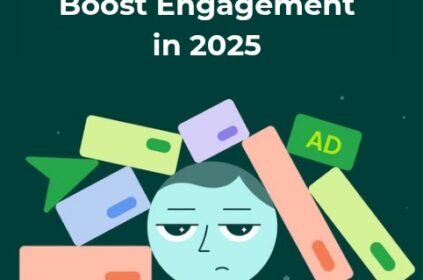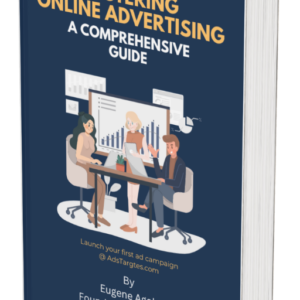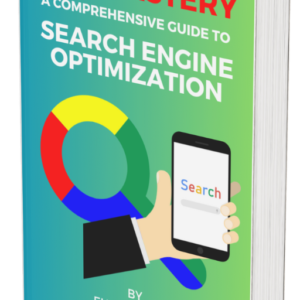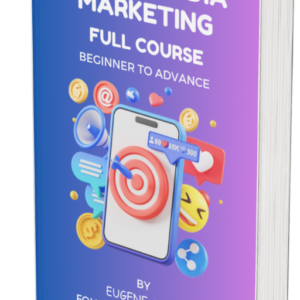Going viral on TikTok feels like hitting the jackpot—thousands (or even millions) of views, tons of likes, and an explosion of comments. But here’s the hard truth in Tiktok marketing: virality doesn’t always mean sales.
Early on, my organization made the same mistake many brands and creators do—we chased views, hoping that massive reach would automatically translate into paying customers. we poured energy into trendy videos, followed viral challenges, and raised engagement. But despite all the buzz, our sales remained stagnant.
That’s when we realized something crucial: TikTok’s algorithm rewards content that keeps people entertained, not necessarily content that drives conversions. If we wanted to turn our TikTok presence into an actual revenue stream, we needed more than just reach—we needed a clear sales funnel to guide our audience from casual viewers to committed buyers.
In this detailed post, we will break down exactly how we structured our content to lead users through a conversion funnel, the ad formats and targeting options that worked best for us, and why reach alone is useless without a clear strategy in Tiktok marketing.
Why TikTok Reach Is Useless Without a Clear Conversion Strategy
For a long time, we thought the key to success on TikTok marketing was simple: go viral, and the sales will follow. We believed that if enough people saw our content, conversions would happen naturally. But after several high-performing videos that brought in tons of engagement but zero revenue, we realized we were missing something critical—a structured path to guide viewers from interest to action.
The truth is, TikTok’s algorithm is designed to maximize watch time, not conversions. It pushes content that keeps users entertained, not necessarily content that drives sales. You can have a video with a million views, but if those viewers aren’t primed to take action, all you have is vanity metrics—likes, shares, and comments that don’t impact your bottom line.
So, what’s the solution? You need to turn TikTok’s organic reach into a customer journey. Instead of relying on virality alone, we started focusing on deliberate content structuring, ensuring every video served a purpose within a larger conversion strategy. Discover the mistakes you should avoid when running Tiktok Ads.
How We Structured Our Content to Lead Users Through a Funnel

Once we understood that TikTok virality alone wouldn’t drive sales, we shifted our focus to a more structured approach—a content funnel designed to lead viewers from discovery to purchase.
Instead of posting random videos and hoping for conversions, we developed a clear content strategy that guided our audience through four key stages: Awareness, Interest, Decision, and Action.
Let’s break down each stage with detailed explanations and real examples.
#1. Awareness Stage: Capturing Attention with Engaging Content
The first step in our TikTok marketing funnel was to attract potential customers by creating content that captured their interest. Since TikTok’s algorithm prioritizes watch time and engagement, our goal at this stage was to create videos that stopped viewers from scrolling while subtly introducing a problem our product or service could solve.
To achieve this, we focused on three key content types:
#1. Problem-Driven Hooks: Videos that addressed a common pain point our audience faced. For example, if we were promoting an online course about social media marketing, we might create a video titled, “Struggling to grow on TikTok? Here’s why your content isn’t reaching the right people.”
#2. Trend-Based Content: we leveraged trending sounds and challenges but added an industry-related twist. If a particular song or challenge was popular, we found ways to incorporate it into our niche while still keeping it relevant.
#3. Behind-the-Scenes Content: People connect with authenticity. Sharing day-in-the-life content, our work process, or even failures made our brand more relatable and trustworthy.
At this stage, we were not trying to sell anything yet. Our only objective was to spark curiosity and reach the right audience.
#2. Interest Stage: Educating and Providing Value
Once a viewer became interested in our content, we needed to build a deeper connection by educating them and demonstrating my expertise. This was crucial because most TikTok users are in discovery mode—they need more context before making a purchase.
Here’s what worked best for us at this stage:
1. Mini Case Studies and Success Stories: Instead of just talking about what works, we showed proof.
2. Step-by-Step Guides and Tutorials: People love actionable advice. If we were selling a digital product, we would share quick tutorials showing how to solve a small but relevant problem. For instance, “A simple TikTok bio hack that increases link clicks by 50%.”
3. Live Q&A Sessions: Engaging with our audience through TikTok Live allowed us to answer questions in real-time, creating stronger relationships and addressing objections before they even arose.
This stage was all about building trust and proving that we had solutions to our audience’s problems.
#3. Decision Stage: Building Confidence with Social Proof and Clear Benefits
At this point, viewers were already familiar with our content, but they needed an extra push to become customers. This is where we focused on eliminating doubts and reinforcing why our product or service was worth their money.
The best-performing content types at this stage included:
1. Customer Testimonials and User-Generated Content (UGC): Real customers sharing their experiences had a powerful impact. For example, we reposted videos from happy customers saying things like, “we followed their strategy, and our sales doubled in just one month!”
2. Product Demonstrations: Showing the product or service in action removed uncertainty. For example, if we were selling a content calendar for social media marketers, we would make a video demonstrating how easy it was to use.
3. Side-by-Side Comparisons: If our product was better than the competition, we highlighted key differences in a clear and visual way. For instance, we created a video comparing my TikTok ad strategy vs. the outdated method people were still using—this made my offer more compelling.
At this stage, the goal was to eliminate hesitation and ensure potential customers felt confident about moving forward.
#4. Action Stage: Encouraging Immediate Conversions
Finally, after nurturing our audience through the funnel, we needed to get them to take action—whether it was making a purchase, signing up, or booking a consultation. TikTok is fast-paced, so our call to action had to be clear, direct, and compelling.
The most effective tactics we used included:
1. Strong Call-to-Action (CTA): Instead of generic CTAs like “Check out my website,” we made it specific and urgent: “Tap the link in my bio now to get 50% off for the next 24 hours!”
2. Limited-Time Offers: Creating a sense of urgency helped drive immediate action. If we were running a sale, we would include a countdown in our video to push users to act fast.
3. Exclusive TikTok Discounts: Offering a special discount code for TikTok viewers only made them feel valued and gave them an extra reason to convert.
At this stage, our audience wasn’t just passively consuming our content—they were ready to buy.
Why a TikTok Marketing Funnel Matters
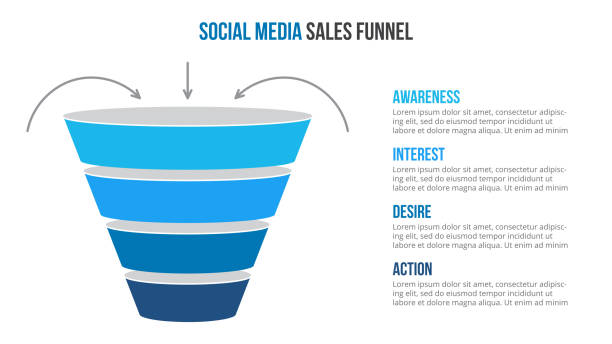
Going viral on TikTok is exciting, but views alone don’t translate to sales. Without a clear content funnel, we would have been stuck chasing engagement with no real business growth. By structuring our content into a strategic journey—Awareness, Interest, Decision, and Action—we turned casual viewers into paying customers. Learn TikTok Marketing: Boost Your Business with TikTok Marketing Examples
The Ad Formats and Targeting Options That Worked Best for Us
While an organic content funnel is essential for building an engaged audience, paid advertising helps accelerate the conversion process. However, running ads on TikTok requires a strategic approach—not all ad formats or targeting methods deliver the same results.
Through extensive testing, we discovered which ad formats and targeting strategies worked best for turning engaged TikTok users into paying customers. Below, we break down the methods that delivered the highest return on investment.
#1. Spark Ads
One of the biggest challenges brands face on TikTok is maintaining authenticity while running ads. Many users skip or ignore overly polished, sales-heavy ads. This is where Spark Ads became my most effective tool.
What Are Spark Ads?
Spark Ads allows advertisers to boost their existing organic TikTok videos as paid ads. Instead of creating separate ad creatives, we used our best-performing organic content, ensuring our ads felt native to the platform and retained their original engagement.
Why Spark Ads Worked for Us:
1. Leveraging Social Proof: Since Spark Ads use organic posts, they carry over likes, comments, and shares, making them appear more credible.
2. Maintaining a Natural Look: Unlike traditional ads, these feel like regular TikTok content, increasing engagement rates.
3. Seamless Transition from Organic to Paid: Users who saw our video organically and later saw it again as an ad were more likely to convert.
#2. In-Feed Ads: Driving Traffic & Conversions with Direct CTAs
While Spark Ads helped boost our organic reach, we also used In-Feed Ads to drive specific actions, such as:
- Directing users to our landing page
- Encouraging sign-ups for a free webinar
- Promoting a limited-time offer
What Are In-Feed Ads?
In-Feed Ads are short video ads that appear as users scroll through their For You Page (FYP). They are designed to blend in with organic content but include an optional CTA button that directs users to a landing page, app, or product page.
How We Made My In-Feed Ads Perform Well:
#1. Strong Hook in the First 3 Seconds: TikTok users scroll quickly, so we grabbed attention immediately.
Example: “Hey guys, I just wanted to share…” → Too slow
“Your TikTok bio is LOSING you customers! Fix it in 10 seconds!” → Grabs attention
#2. Conversational Style: Instead of making our ads look like traditional commercials, we filmed them in selfie mode with natural lighting, making them feel more personal.
#3. Simple & Clear CTA: We tested different call-to-action phrases and found that direct CTAs like:
“Tap below to get my free guide!” performed better than vague ones like “Check it out if you’re interested!”. Discover 7 Powerful TikTok Ads Strategy: How to Create Mind-Blowing TikTok Ads For High ROI
Targeting Strategies That Drove the Highest Conversions

Selecting the right ad format is only half the equation—the other half is targeting the right audience. Many advertisers make the mistake of casting too wide a net, leading to wasted ad spend. Instead, we refined our targeting using three core methods:
#1. Lookalike Audiences (Scaling to High-Intent Buyers)
After running successful campaigns, we created Lookalike Audiences based on our:
- Existing customers
- Website visitors
- Engaged TikTok followers
TikTok’s Lookalike Audiences helped us find new users with similar behaviors to our current buyers, making them more likely to convert.
#2. Interest & Behavior Targeting (Attracting New Leads)
To expand my reach, I targeted users interested in:
“E-commerce marketing”
“TikTok business growth”
“Social media ads”
Instead of targeting broad interests, we narrowed it down by selecting users who had engaged with similar content in the last 7 days—ensuring we reached actively interested audiences.
#3. Retargeting Warm Audiences (Closing the Sale)
Many potential customers need multiple touchpoints before they buy. That’s why I ran retargeting ads for:
- Users who watched 75% of my videos but didn’t take action
- Visitors who clicked my link but didn’t convert
- People who added products to their cart but abandoned checkout
Our retargeting campaigns had a 40% lower cost per acquisition (CPA) than cold audience campaigns. Check out our TikTok Ads Targeting Guide.
Conclusion
Many businesses and creators focus too much on getting viral views, but the truth is that TikTok reach alone doesn’t drive sales—a well-planned conversion strategy does. If you want to turn TikTok traffic into paying customers, you need a structured sales funnel that guides viewers from discovery to purchase.
Here are the most important lessons from our experience:
#1. TikTok reach is just the beginning—conversion strategy is everything. Viral content is great for brand exposure, but without a clear plan to convert viewers into customers, it won’t generate revenue.
#2. The right mix of content structure, ad formats, and targeting makes all the difference. Creating content that aligns with the TikTok sales funnel, leveraging effective ad placements, and targeting the right audience helped me maximize my ROI.
#3. Consistently analyze and refine your strategy based on data. Tracking key performance metrics like engagement, click-through rates, and conversion rates helped me identify weak points and optimize my approach for better results.
Now, we would love to hear from you! Have you successfully converted TikTok views into sales? What strategies worked best for you? Share your experiences in the comments!




